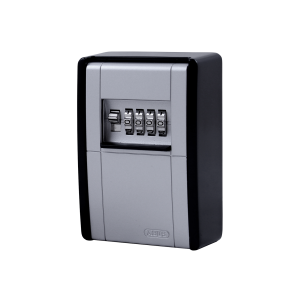Choosing a key safe for elderly care - accessibility and security
Caring for elderly people requires many different considerations. In many cases they prefer to remain living at home, even if that means they are on their own and don’t have the round-the-clock healthcare available to them that they might need. This is completely understandable and is often a case of weighing everything up in terms of someone’s everyday needs. It is also possible that an elderly person is determined to stay at home and refuses to consider moving into a dedicated facility where they would receive 24/7 care. In such circumstances a risk assessment of the home requires a study of all the everyday elements which can be managed to make their lives safe and comfortable, and one of those is security.
When an elderly person is wanting to remain at home, but has regular care needs, this can often mean that visitors need to come to the house every day, and even several times a day. This can be to deliver or administer medication, to undergo exercises or offer treatment, to make meals or clean the property, or simply for some company and interaction. These can be healthcare professionals and dedicated caregivers, they can be family, friends and neighbours, or they could be cleaning services or a type of ‘meals on wheels’ service in the community. In all cases the elderly person’s home needs to be accessible, but it should not be expected that the person has to get up and answer the door all the time. In some cases there may be three or four different visitors during the course of a day, and if the elderly person has accessibility issues, then a system needs to be designed for authorised people to enter the home, and that solution is a key safe.
What is a key safe?
A key safe is a small, lockable cabinet which can contain a spare key for the property, and which can only be accessed by those with prior authorisation. Access to the key safe is usually via a four-digit code entered into a combination dial, or into a keypad, which can be manual or digital. This code will only be distributed to those who have approved access, and the code can be changed if there is any suspicion that security has been compromised. The visiting person can input the code, open the safe and access the key. And when they leave again, they return the key and lock the key safe, so the next person visiting can use the same system to access the key.
This system ensures that:
- The elderly person doesn’t need to keep getting up to answer the door
- Authorised personnel can always enter the property, bearing in mind this could include an emergency situation
- The front door to the property can be locked at all other times
- There is no need to distribute multiple spare keys for the property
Considerations when choosing a key safe for elderly care needs
There are a number of different designs of key safe, which differ in terms of size and design, but the main difference is the method used for accessing the safe. So considerations include:
- Access method - Choose a method of accessing the safe that suits the people using it. This isn’t likely to include the elderly person living in the property, so it can be a digital system which generally has more sophistication. Combination dials can become worn and less reliable, in that they need more care and precision to line the numbers up before the lock disengages. It may be better to choose a more contemporary design, such as a digital lock, but it should be considered whether this is usable for everyone likely to use it.
- Power source – Modern digital locks will require a power source. This could be wired into an electrical system, but more generally are just battery powered. Someone needs to monitor the battery performance and status so that the key safe system always works. It is recommended to nominate someone authorised to manage and be responsible for the key safe. Given that healthcare providers and personnel often change, this should probably be a family member or perhaps a neighbour who regularly calls round.
- Location – For security reasons it is advisable to locate the key safe in a discreet position. This should be easy to find, for anyone visiting who is specifically looking for it, but not visible by the road or anyone passing-by. A visible key safe will attract attention, so it should be located around the corner from the house, or maybe behind a bush or tree, but always in a position where it can be easily accessed. Most key safes can be wall mounted.
Check out our range of key safes at MB Direct today
Key safes are a useful and convenient way to ensure controlled access for authorised people providing routine and essential healthcare services to the elderly. They ensure the elderly person has peace of mind that their home is accessible to the right people, and secure at all other times, so that they can receive the care, company and essential services they need. So check out our range at MB Direct and order online today.